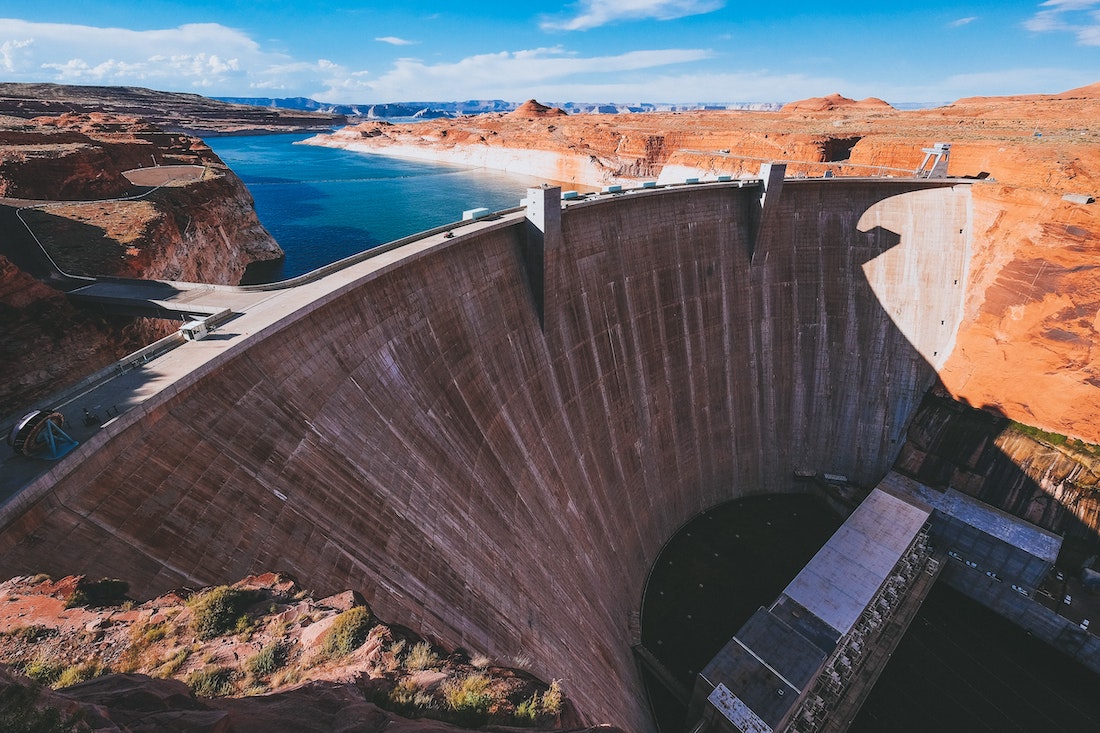
It feels like an apocalypse in the Southwest — wildfires, floods, drought, heat, smoke. This was not the norm when I moved to Colorado 35 years ago. Local weather experts may possibly have predicted the arrival of these intense functions, but several admit their predictions have occur correct faster than they anticipated.
A single final result they pinpointed was the influence of heat and drought on h2o flows in the Colorado River. For the very last 20 yrs this new climate, mixed with booming human population development, has parched landscapes, drained reservoirs and incited discuss of h2o wars across the region. Lake Powell on the Colorado River, and Glen Canyon Dam which makes the reservoir, have turn into casualties of this strained surroundings.
Lake Powell is the second most significant reservoir in the United States, but in the last yr on your own its water amount has dropped 52 toes and the reservoir now sits at 31.4% entire.
If you’re a pessimist, which is around 68% vacant. H2o managers are already imposing cuts in h2o deliveries in some states all their alternatives are crammed with political pitfalls.
A further complication is that the federal federal government operates a hydroelectric plant at Glen Canyon Dam that presents affordable energy to components of the Southwest. The day is coming when the hydroelectric turbines will halt for want of h2o to spin them.
To help save the lake and make electric power, the federal government demands drinking water. But in which will that drinking water occur from?
Upstream of Lake Powell, in Utah, Colorado, Wyoming and New Mexico are tens of millions of acres of irrigated farms and ranches that suck substantial quantities of water out of the Colorado River prior to it reaches Lake Powell. If individuals farms and ranches stop using water and as an alternative ran that h2o downstream, the lake and its electricity could be saved. To make sure that consequence, the federal govt has hatched a prepare it phone calls “demand administration,” which proposes to acquire or lease large quantities of farm and ranch drinking water to prop up Lake Powell.
On the a person hand, the farmers and ranchers would get paid out for the drinking water, and likely paid really nicely. If I ended up a rancher who owned drinking water, I’d sit easily right until the featuring value for my water manufactured me even far more at ease.
On the other hand, tons of folks and businesses believe that that irrigated farming, ranching and outdoor recreation are not only central to the region’s financial system, but also to its tradition. Really should that economic system — and the soul of the Southwest — be sacrificed to conserve a artifical reservoir and its hydroelectricity?
I’m torn by this problem. If farms and ranches are dried up, more water flows down the river. Extra h2o in the river gains fish and the surroundings. But there’s another solution: We can help you save farms and ranches and as an alternative drain Lake Powell, liberating the Colorado River to flow free of charge by way of 169 miles of a drowned and attractive position identified as Glen Canyon.
There’s always the “save hydroelectricity” argument, but it is a pink herring. There are other means to make energy, like wind and solar. In truth, if you have at any time stood close to Glen Canyon Dam and its hydropower plant, you can not assist noticing that it is surrounded by hundreds of thousands of acres of dry, solar-drenched landscape that would make a fantastic spot for a photo voltaic electrical power farm.
Electric power can be changed farms and ranches cannot.
As we grapple with these tradeoffs, it is essential to bear in mind that even decreased drinking water flows are projected for the long run, in addition additional intense warmth and drought that will develop into the “new normal” for the Colorado River and the entire location. Lake Oroville, California’s second largest reservoir, now has inactive hydro turbines because there is not plenty of drinking water to flip them, its dusty lakebed a harbinger of what’s to appear for Lake Powell.
Let us also try to remember that Glen Canyon Dam was concluded in 1963 and it and Lake Powell are only 58 decades previous. The location lived without having them just before, and it can dwell without having them once more. Now, mother nature is forcing our hand, telling us that it is time to breach the dam and enable the Colorado River run free of charge.
Gary Wockner is a contributor to Writers on the Array, writersontherange.org, a nonprofit focused to spurring energetic conversation about the West. He is a river-safety activist based mostly in Colorado and operates the nonprofit Save the Colorado. Top rated photo: John Gibbons/Unsplash.
***
For a lot more on what treasures lie beneath the dwindling waters of Lake Powell, read Ghosts of Glen Canyon: Heritage beneath Lake Powell, by C Gregory Clampton, with a foreword by fantastic ole’ Ed Abbey.
